

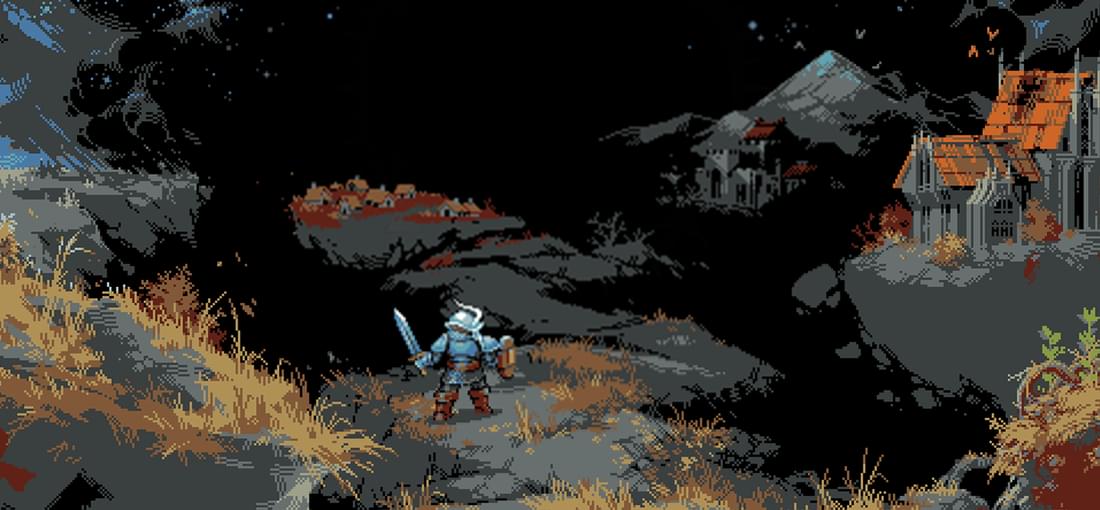
A mid-game review: I bought LH on steam after playing the demo. Perhaps I shouldn't have. Steam assumes you don't want to start from scratch in the full game and gives all trophies that you (unknowingly) got in the demo. So much for the "fresh feel of a new game". Anyway... About LH, the demo was a pleasant surprise. I'm a sucker for a combo of idle, rpg and strategy. The few cards, you were allowed to play with in the demo, have a lot and interesting synergies. The game communicates these through conversations, like a vampire talking about a village. Or through mechanics like rocks and mountains provide additional bonuses when placed together. I was more or less expecting the full game to explosion in an orgy of wild synergies. At least, the building tree at the camp seems enormous, and when you can already do so much with the few buildings available in the demo? Sadly, in a day of play most buildings are in my camp, and I found surprisingly little new synergies. Maybe the games opens up again when all buildings are upgraded? If so, I give LH the well deserved 4 stars it gets from me for the demo / 1st chapter. To give a clear example - if you don't want any spoilers, even a small one stop reading - you can build a library. It works like an encyclopedia were you can unlock little bits of lore. In the spirit of the demo I expected these bits would at least hint at more synergies. Instead they seem little more than funny scribbles from the dev-author: "[..] The slime was ready for the first adventurer." For some reason I was not expecting a meadow to blossom near a desert... maybe I have more luck with placing a river tile inside a desert ... ?
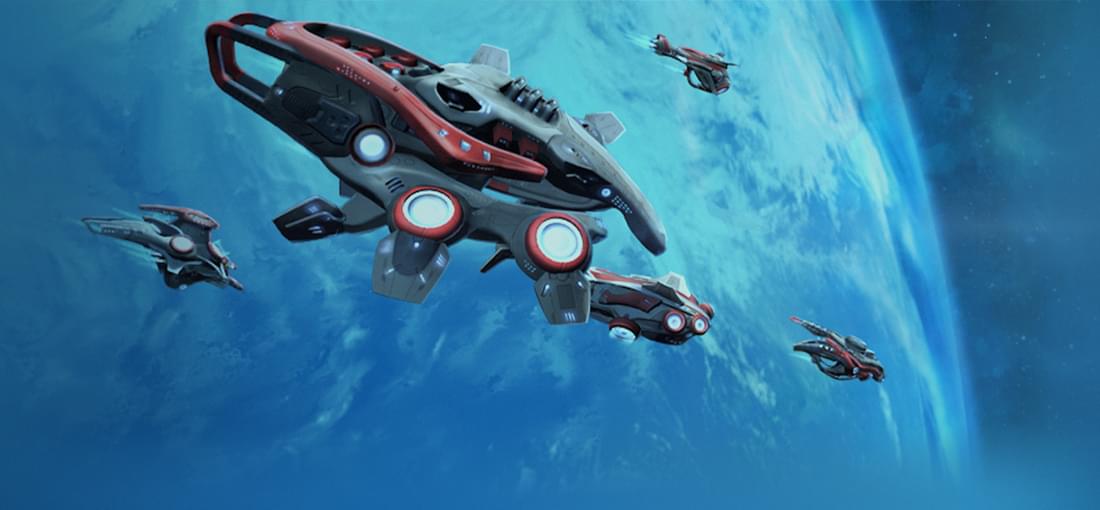
My daughter of 7 thinks the blue gremlins in robot suits are cute. In game, they are a brutal race lead by a dictatorship. Funny, but It also illustrates how IS-G cannot decide between being an easy going space sim or a hardcore strategy game. At least, my daughter could not get around the excel sheet like info the UI throws at you. Sadly, IS-G has more severe problems. Basic exploration is done by sending a scout. Detailed exploration is handled in a chess-like grid of the sky map and fixed turn durations. You can send a surveillance ship to reduce the duration. The opposite mechanic would have been much more enjoyable, e.g. scan the sky map and use a ship to find ancient ruins or He-3 in a gas giant. Expansion provides a bonus like +50% biological or a production increase (used for everything) equal to making an ultra-poor planet a poor planet, on ALL planets. Compare that to another option of 1 free surveillance ship and you start to understand that the game balance is a problem. But nothing beats the poor AI. I attacked the human homeworld and the AI decided to flee because it had been sitting on its hands for the last 200 turns. Invasion was no real option with only 2 invasion ships and no ground combat science at all. Instead I tried the raid option at 70%. It was successful in kidnapping the extremely strong military leader that had cost the AI 10 BC for the last 100 turns. I could recruit the leader and next round invade the planet with minimal losses. Ground combat is like a Windows progress bar where at any time it can reach 100% or fail. After reaching the AI’s last planet it finally stayed and fight. It even managed to kill a few of my ships, which left me to wonder if earlier fights would have actually ending my blockages and a bit of challenge? I thought that after the debacle of MoO3, 4x developers would be aware that a challenging (preferably no/little cheating) AI makes or breaks their game. Apparently, Praxis failed the first 4x-rookie test.
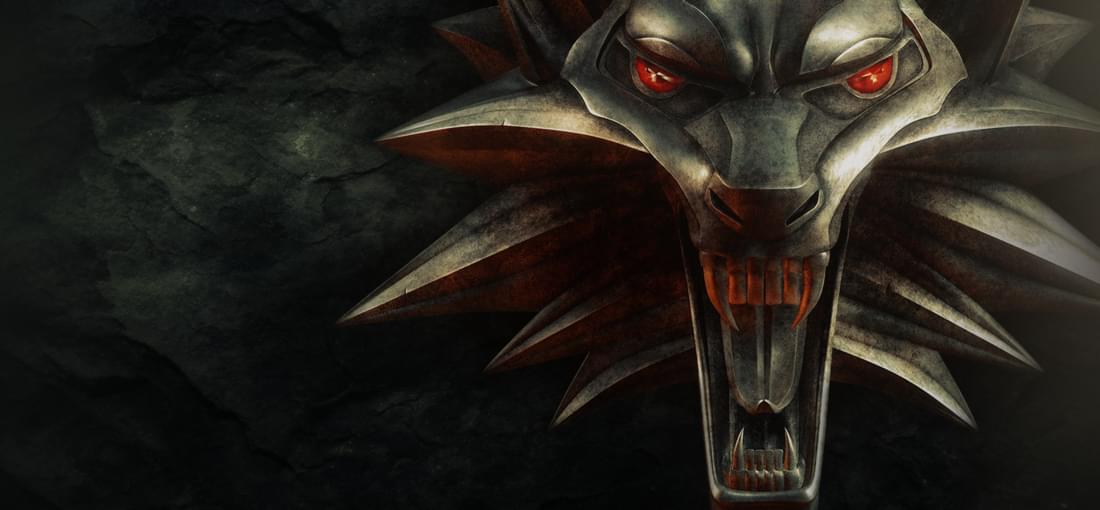
In The Witcher, you are a sterile killer with pale skin, cat eyes, throat cancer and get all the women. It is a wet boy’s dream. You drink wives tears to get rid of Vodka intoxication, gamble, fight in bars, converse or kill a werewolf, stay neutral amid political intrigue and sorcerers, read a book on how to dissect a wyvern, discuss the atom with an alchemist and slay swarms of drowned dead. The world is well build and beautiful for a game of 2007. The story is a combination of The Game of Thrones and Dracula, where you choices are gray and dark gray: choose the lesser evil. The game is not without problems. Back in the days, The Witcher played as watching American television: Every minute an endless loading screen. Add constant desktop crashes and I simply gave up. Today in 2021, loading times are reduced to a few flashes that give me headaches and epileptic seizures. Crashes are still present, as well as many graphical glitches and broken AI. NPCs have multiple voices. CD projekt Red quality issues did not start with Cyberpunk 2077. The world is filled with copy-paste. Clones of plot characters can be found everywhere, and a mere handful of voice actors cast all characters. Cities and caves are reused over and over, and filled with new monster types each chapter. You walk trenches while doing hundreds of errand quests in the same city section. The story and lore of each quest is interesting, but they all involve fetch and deliver. The later chapters swap the open world for a scripted story. Combat is not much better. It starts with an interesting crafting system of potions that reminds me of memorizing spells in DnD. You select one of your many swords and a fighting style. Then it is clicking the left mouse button at the right moment till the fight is over. Geralt makes somersaults and finishing moves, but you as player do little more than spam the mouse button. The Witcher brings an interesting story with gameplay that is boring before halfway through.
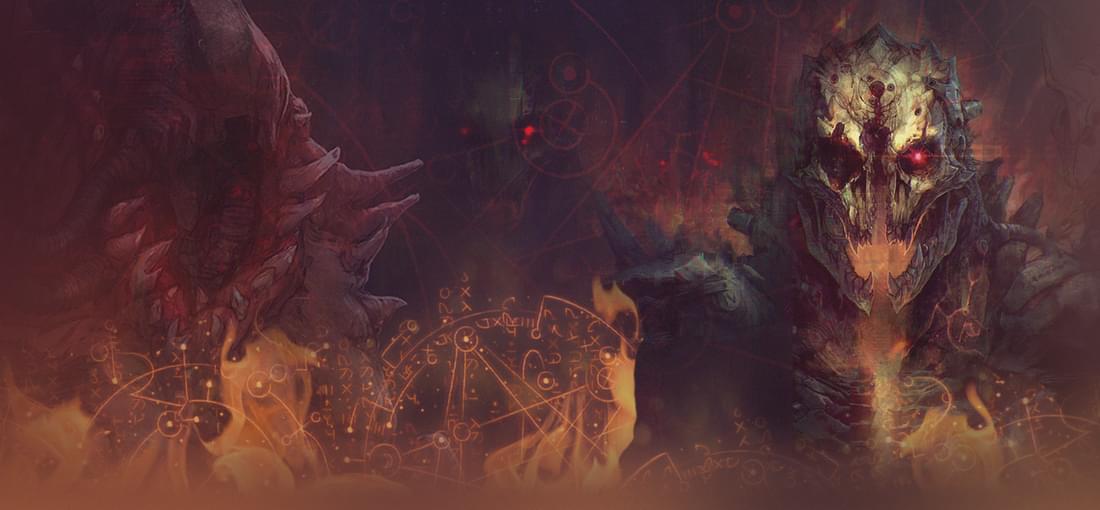
My first impression of Jupiter Hell is similar to what most reviewers describe. The presentation is, for a roguelike, rock solid. Music is metal. Oneliners thrown at every corner, and guns with impact. “Take That!” A few runs in, every game start to feel the same: Same floor, same layout, same gun, same enemy. Mechanics don’t offer you options. Yes, a soldier can reduce pain; a technician can throw a smoke screen, but typically only once every level. You find grenades, one or two in a level. Sometimes you hit the jackpot with 5 grenades, only to realize you can take only 1 or have to drop a stimpack. J. Hell does not surprise. You can spend a few perks to sprint. This gets you out of the nasty situation, like a Kerberos dog biting your leg. Unfortunately, you cannot use it till next level. Btw. there is hardly any use of sprint other than run away from dogs and on occasion get you into safe cover. Perhaps JH is meant to be played differently? Perhaps, I should use the one special my character has only when really needed? Between those instances, it does not matter what character I play: I move carefully, stay behind cover, and spam the fire button when sighting enemies. They walk up to me anyway (totally ignorant of cover) and they drop. The only criterion to get further is to not forget the 12ga jackhammer and find enough healing packs to survive the next wave of fire fiends. Damn, “Something’s gone wrong… really fucking wrong”. Well it only takes roughly an hour to be back on the same level, with the same gear and skills, but this time I promise myself to not rush mindlessly into the next room. My brain is on electric stim: “Blood for the Blood God!”
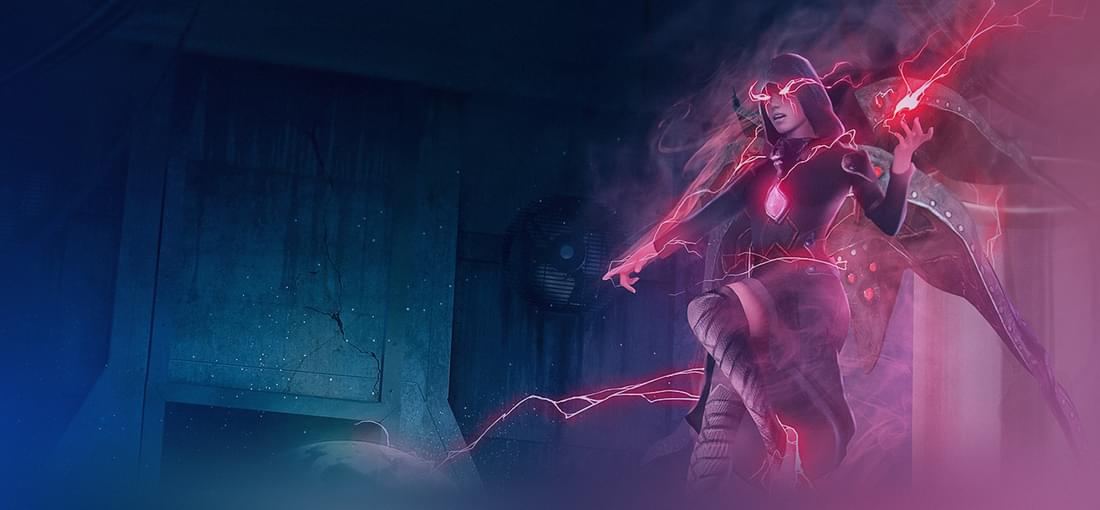
Tower of Time is very atmospheric. I was pleasantly surprised by the game’s mood, the beautiful environments and music. In the upside-down tower, you find a skeleton in a skiff floating on a dark lake, and see detailed manufacturing plants in the far distance long before you descent between the machines. The gameplay reminds me of Dungeon Siege from 2002. Your growing party presses onward on a linear path while fighting endless mobs. Combat takes place in arenas, which support simplistic AI pathfinding in a tactical game of positioning. It is not about violence and bloodshed. Huge axes swing without sound or impact. That does not mean that the combat is bad, quite the contrary. Encounters are handcrafted. The result is balanced combat that becomes progressively harder. You find optional fights that are challenging and offer interesting loot. Some of the stronger loot breaks the typical rpg rule of more is better. An item can drain life, but provide a large decrease to casting delay. This allows a glass cannon build or shifting healing from passive individual healing to placing party healing totems. The balance brakes later in the game. The variety of options allows builds that are too powerful. Spells that hit an area with damage over time become obsolete. Where epic difficulty provides an enormous challenge early on, requiring varied party setup and slow time to survive, it provides hardly any challenge on later levels. The game tells you to play on a just doable difficulty. This might be true, but also replaces flexibility by min-maxing. At high difficulty, the choice between a physical axe and fire sword is replaced by picking the weapon with most penetration. The story deserves some mention. It is unique and starts by complementing the atmosphere. I was enthralled, till the Organthe. From there the story derails, completely. I found it bogus as hell, and worse. After completing the story (100+ hours), I’m left confused about all the non-sense.
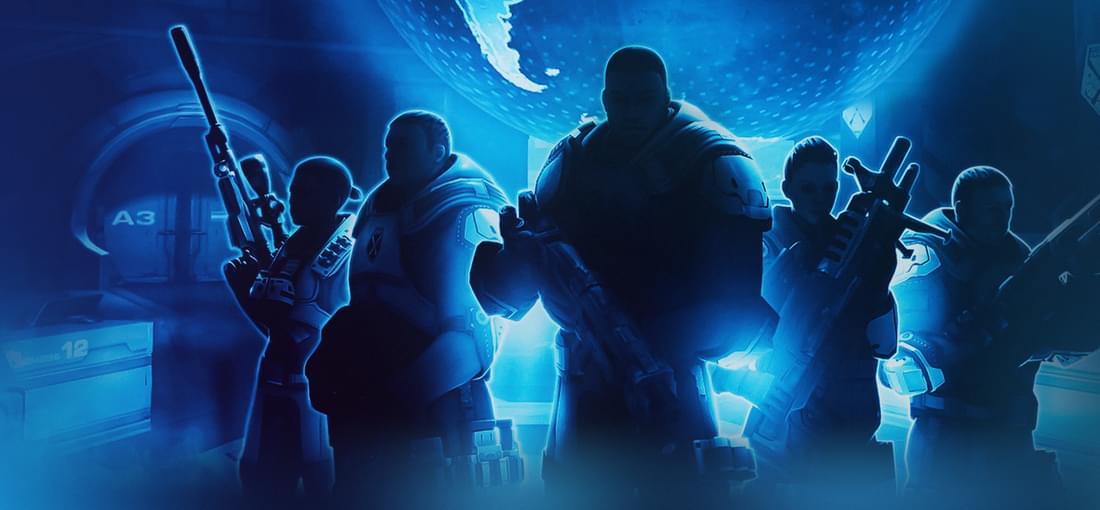
XCOM: EU is a spiritual successor to X-Com: UD from 1993. Enemy Within expands with more stuff, but does not change core gameplay. XCOM stands on its own and differs from its predecessor. XCOM stands out by its streamlined tactical skirmishes. You are briefed while the area loads, objectives are explained while you take your first turn (replaces a deployment phase) and on the second turn encounter the first aliens. Soldiers can move and shoot or make a single dash per turn and defense is regulated by a simple cover system. A rare resource called Meld can be collected on the field if you move fast enough. This provides a reward for pushing hard, but rushing the field is not mandatory. Some mission timers exist, but these are time plenty on normal difficulty. The global strategy of XCOM is also streamlined. XCOM removes simulator elements of the older title. Secondary bases are for spotting and shooting down UFOs, not for dealing with simultaneous treats or as manufacturing plant to finance your operations. XCOM is less multinational, and focuses on USA military style. Hotheads cheer in a situation room when the first UFO is taken down. But the biggest change in the newer XCOM is soldier customizability. They get nicknames, individual looks, skills and specialties. This makes the two games very distinct. Where in X-Com your individual soldiers are more of a resource with very limited warranty, in XCOM you need to do stupid stuff or have extremely bad luck to lose a high ranking soldier. A soldier ranks by killing, not by mass recruitment. You can argue which game is better. I think the customizability of XCOM gives you a kickass squad of elite soldiers, while the generic soldiers of X-Com require superior planning, tactics and strategy. Maybe you want to try one of the mods for XCOM? Long War is recommended. It provides more challenge and expands the scale of the game in every possible way, but as the name implies, also makes a playthrough long, very loooong.
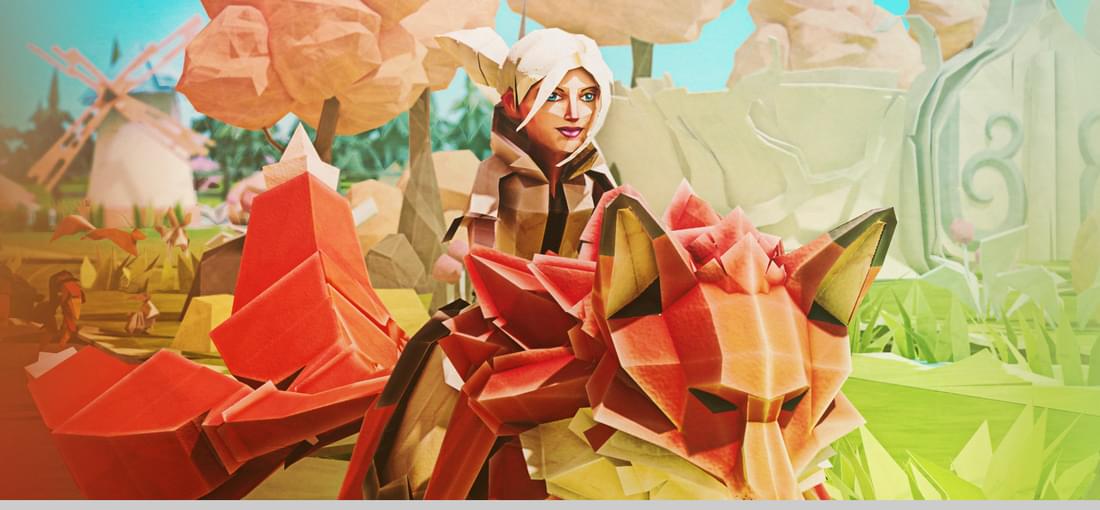
Epistory is a story, a romance, saga, fable, hence an epic about a girl on a fox. She explores an unfolding world of stacked paper and overcomes insects by typing their names such as ‘err’, ‘sick’ and ‘sloth’. The length and difficulty go up as the game progress or because of how the dynamic difficulty setting works? You find many tongue twister of some rock formation ending with –mite, and typing becomes fun when a spider with long legs is called ‘multinational’, or an insect calls itself ‘coujntermeasure’. You can see why I bought this game. Not because it is beautiful and atmospheric, I simply want to make fewer errors when typing. I can spell out long works just fine. My problem is to type too many letters. The backspace key is the most worn key on my keyboard. Unfortunately, Epistory will not make me a better typist. Besides the dynamic difficulty option, there are no type options. You cannot set incorrect letters to be written anyway. You cannot increase word length. You cannot set typing speed. I like the use of elements. Not in the way that some monsters can only be killed with a specific element, but when you have the a choice between using fire to burn of two words from a long worded creature, or try to use chain lightning to deal with the creature by means of killing a short word bug next to it. It adds an additional layer of thinking. Apart from sometimes overlapping names, the font style is clean and clear. Besides the lack of typing options, there is one thing that I did not really like about Epistory. Every completed word starts a timer or refreshes the timer and increases a typing score. This means that phases, between typing, when walking on the world map are the most stressful. In a typing game, stress should come from not getting words right. Not from not getting words at all!
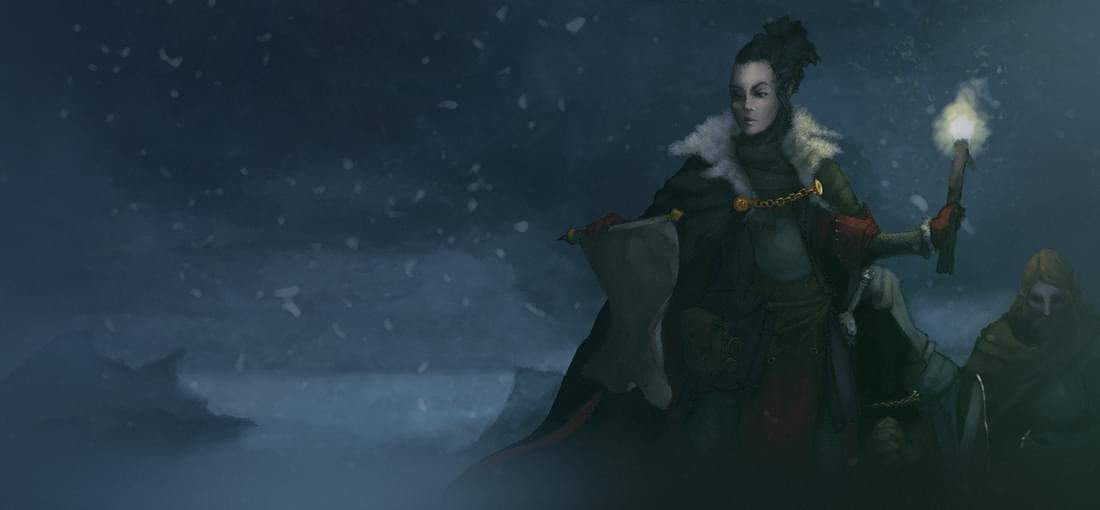
SitS earns 4 stars for its uniqueness, amazing east European medieval setting, exploration over handholding, pen-and-paper roleplaying, and an astounding effort from the two-person development team. Even so, SitS hides many limitations behind a curtain of confusion. The first tip to play SitS is to use a journal and write down everything of notice. You only don’t know what is of notice? An ingame character puts it simply: I wish I knew what I was watching for. The initial quest to forward the main story is to find a scholar. The scholar tells you interesting stuff about the Staglands, but no pointers on what to do next? It turns out that the quest-giver tells more, about a look in the scholar’s library. This context info is what you been watching for. Great world immersion, sadly, I wasn't immersed for too long, before realizing how the game communicates. There is great roleplaying, yet limited. Conversations turn out the same, regardless of the dialog you pick. At best you decide who gets killed. You cannot loot someone’s house without having to kill the owner. You can talk and then pickpocket to get two quest items, but you might not find any on a dead corpse, as I found out after randomly killing an herb witch. Merchants don’t restock, but take any item from your inventory unless it is a stacked item in which case you need a full stack before you can sell. Halfway through the game, the inventory is overloaded with partial item stacks, keys, biscuits and scrolls, items of which you are not sure you can drop. You find an useful incantation book, but find the most interesting incantations in an out-of-game .pdf manual. You can steal stat points from companions without them caring. SitS offers a unique experience and can provide satisfaction after understanding something initially confusing. On the other hand, SitS is often more of a textbook investigation with symbols than an actual computer game. It is sad, because the setting is something really special.
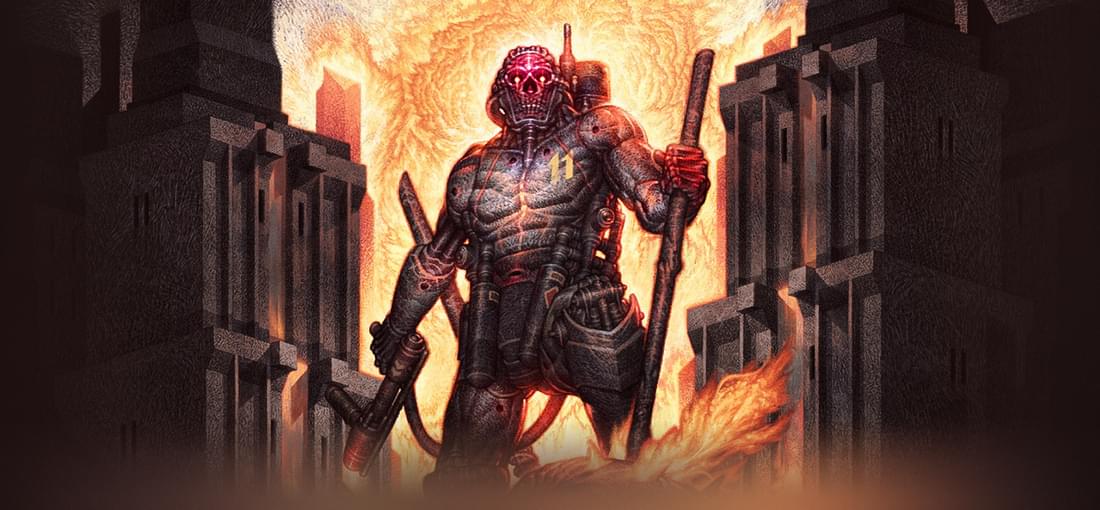
You may say that Butcher is hard. Hard is the normal setting, ramping up impossible. But you will get through if you have played an FPS, or other game that requires good aim. Levels are fixed, except for enemy spawn locations, to avoid pre-aiming. This means that after several (or many) attempts you will succeed whether due to improved skill, knowledge of the level, or both. Butcher is not based on luck. It is a short game, and the graphics are brutal but primitive. Clearly, Butcher is made by a Terminator fan. There are a few references when selecting the difficulty, and a hand at the very end. In between you terminate fragile humans who carry the same arsenal of deadly guns. If you happen to get buckshot in the face, it is game over. What you have, and they lack, are reflexes and mobility. You also possess a magic button called melee, and it is not the chainsaw. A melee attack stuns and pushes enemies away. If you practice a bit (a lot), you can throw enemies off cliffs, into hooks, and save precious ammo. Ammo is everywhere, and yet you are forced to rotate weapons often as weapons deplete fast. The balance is great. Butcher is not a platformer. There are some sections that have rotating shredders or spikes in placed that I have, all, visited at least once. Yes, you jump constantly. Not to avoid deadly pits, but to break line of sight as you can kill only a limited amount of enemies with every shot. Only if you want to collect the secret skulls, are you required to make some tricky moves. And there are a few places where you can shortcuts difficult areas by a grenade jumping, being fast to reach a door before it closes, or kill a scientist through a wall with a powered up railgun shot.
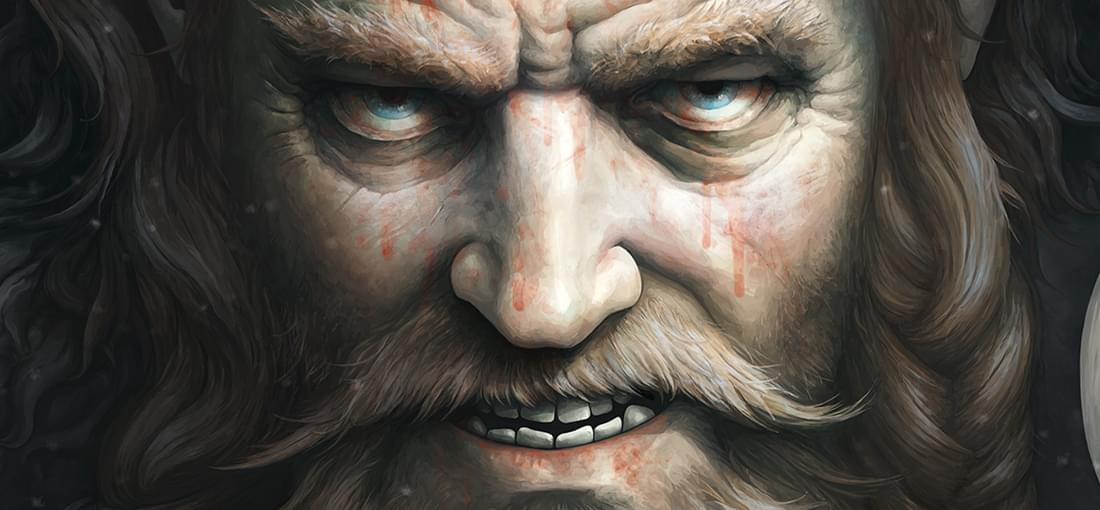
In Niffelheim, you are a Viking, and you are dead. Stuck on Niffelheim, some Nordic variant of purgatory. Niffelheim is dark, gloomy and it rots. It rots away your equipment, your tools and your weapons. Even though you are dead, you have the hunger of a gargantuan Viking. In order to survive you are constantly tunneling a mine, cutting trees and gather plants, twigs, rodents, dead rodents, and fight off wild wolfs and skeletons. Looting a burial site is a treat. The mood and resource balance makes the grind actually fun. You constantly feel the necessity to keep gathering only to cope with the increasing dangers in Niffelheim. That is till you start to notice a trend. The game only features a few mechanisms. You find ore in the mine, inside your castle. Going deeper in the mine increases the chance of finding more expensive and rare ore. Every level of ore can level your gear. So you dig deeper and deeper till an earthquake happens. It sounds interesting, but what happens is that the mine simply replenishes, it resets. It is not so much wasted effort, because the refresh means more hard to come by coal, but it reminds you, as the player, that the mine is for ore. It is not a dungeon where you find a dragon’s lair, or something interesting, if you would only dig deeper. At nighttime there are wolves, boars, mushrooms and a few skeletons, and during the day Niffelheim is populated by animals and bees. The cycle repeats every day. In other words, once you played Niffelheim for 10+ hours, you know where to find each resource. The dark atmosphere loses its layer of exploration and mystery, and become a simply nice and grim background to a lot of walking and chopping wood.